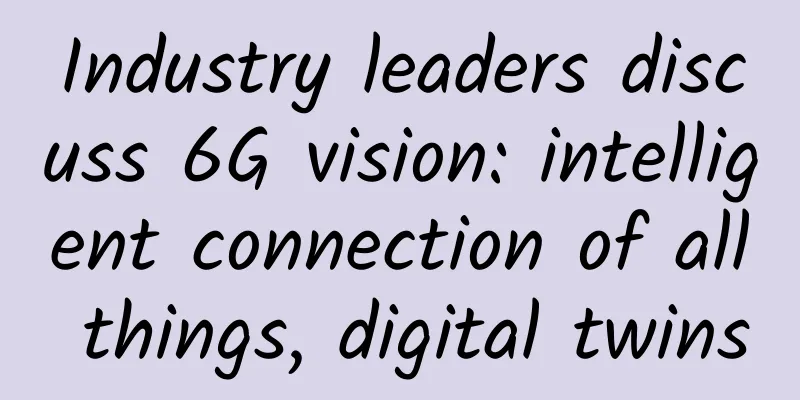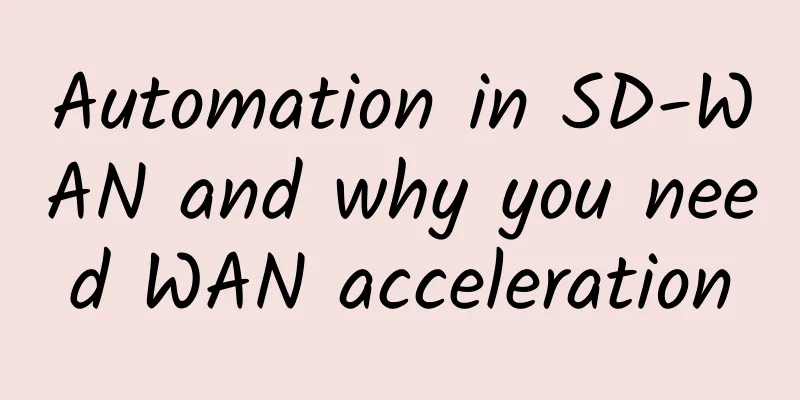Industry leaders discuss 6G vision: intelligent connection of all things, digital twins

|
As 5G network construction accelerates, related applications are beginning to flourish and penetrate into thousands of industries. In accordance with the development rhythm of the mobile communications industry of "using one generation, building one generation, and developing one generation", the global industry has begun to explore and research the next generation of mobile communications (6G). Recently, the Future Mobile Communications Forum hosted the "Global 6G Technology Conference" with the aim of building a global scientific and technological cooperation platform and a bridge for collaborative innovation, forming relevant recommendations for promoting 6G research and development, and striving to promote the cultivation of a globally consistent 6G concept. Together, we will create a good environment for global 6G development and contribute to the formation of a globally unified 6G standard and the sustainable development of the information and communication industry. On the first day, at the "6G Vision and Technology Requirements" forum hosted by Wang Zhiqin, Vice President of the China Academy of Information and Communications Technology, scholars and experts from various fields of industry, academia, research and application discussed how 6G will change the world. Beyond communications: Intrinsic intelligence and security, external perception and experienceZhang Ping, an academician of the Chinese Academy of Engineering and a professor at Beijing University of Posts and Telecommunications, said that 4G changes life, 5G changes society, and 6G changes the world. "6G will move towards a ubiquitous and simple network where humans, machines, objects and spirits are fully connected, virtual and real are combined, and wisdom emerges." The "spiritual" here refers to the spiritual network, which is the Chinese version of the metaverse. 6G and the simplest wireless network will strongly support digital twins, and digital twins will further provide continuous autonomous endogenous optimization for the evolution of the simplest network. Xu Wei, a professor at Southeast University, believes that the future development trend of 6G technology is to provide wider coverage in more frequency bands, wider bandwidths and deeper dimensions, ultimately achieving a fusion of faster speeds, more stable transmission, and more dual-carbonized and more intelligent smart networks. Cui Chunfeng, director of the Green Communications Research Center of the China Academy of Mobile Communications, emphasized the beautiful vision of 6G's "digital twins and ubiquitous intelligence". He pointed out that typical use cases of 6G include holographic interaction, digital twins, synaesthesia, intelligent transportation, smart production, and the metaverse. These use cases put forward higher requirements for 6G networks: first, extreme capabilities, second, software-defined distributed networks, third, full coverage, fourth, ubiquitous intelligence, and fifth, inherent security. "For operators, we hope to achieve a network with digital twin operations, zero touch, and automated operation and maintenance, which can reduce costs while improving efficiency, and can 'self-generate and self-evolve'." Wang Qingyang, director of the Mobile Communications Research Institute of China Telecom Research Institute, said that the future IMT2030 is a new system that builds intelligent interconnection between people, machines and things with endogenous intelligence and security, and external perception and experience, and is the engine for the harmonious development of human society and the natural environment. Therefore, the innovative development of 6G technology should take green energy conservation as the basic principle, improve the energy efficiency of the system, and implement ecological operation; at the same time, it is also necessary to consider how 6G technology can empower thousands of industries, help various industries deepen digital transformation, and achieve green and low-carbon development. Changing the world: Intelligent connection of all things, digital twinsWang Jun, a technical expert at Huawei's wireless technology laboratory, said that 6G will further develop capabilities beyond communications, expanding the two major application scenarios of artificial intelligence and communication perception based on the three major application scenarios of 5G. As for how 6G integrates the physical world and the digital world, Wang Jun introduced: From the physical world to the digital world is a typical downlink channel, which delivers AI capabilities such as deep learning, machine learning and big data analysis to users through immersive experiences such as AR/VR; from the physical world to the digital world is a typical uplink channel, which mainly applies full-scene perception and big data collection for machine learning to enhance the perfection and capabilities of large models in the digital world. In this process, 6G will integrate connection, perception and AI capabilities and become a key bridge. Sun Bo, senior expert of wireless technology at ZTE, believes that 6G will provide full service capabilities, including ultra-high performance, service perception, intelligent interaction, agile automation, and global coverage, thus building a network that connects everything intelligently. After the gradual evolution from 5G to Advanced and then to 6G, mobile communications will continue to improve computing and storage capabilities, thereby improving services such as endogenous AI, endogenous perception, and content security. At the same time, it will also provide better energy efficiency, surpassing the current ICT system deployment and application boundaries, and providing services for more markets and vertical fields. Xu Hao, head of R&D for Qualcomm China, pointed out that how to define the scope of 6G technology and 5G technology is a very important issue. Most of the 6G technologies currently under discussion are also being discussed in 5G, such as artificial intelligence, massive antennas, expansion to high spectrum, millimeter waves, etc. As for what technologies should be reserved for 6G development and what technologies need to be developed in the 5G stage, from Qualcomm's perspective, as long as the technology can be applied within the scope of 5G now, it will continue to be promoted in 5G Advanced, and summarize experience from current experiments and applications to provide guidance for the future research direction of 6G. Qin Fei, director of vivo's Communication Research Institute, said that vivo defines 6G requirements as "3+3+N", namely "3 key enablers, 3 types of terminals, and N types of IoT". The "3 key enablers" include the service capabilities of converged computing, strong perception and interaction capabilities, and a super communication system; the "3 types of terminals" are XR, smart robots, and smartphones; and the "N types of IoT" include a variety of sensors, "all the digitalization that makes our world a better place." Sun Chengjun, senior director of Samsung Electronics, said that in the 6G era, the number of connected machines will increase, and is expected to be equivalent to 60 times the world's total population. Machines have higher resolution than humans, so they have higher requirements for data transmission rates. Therefore, Samsung's 6G vision is to provide humans and machines with a higher level of connection experience, including immersive XR services, as well as high-fidelity and digital twin services. In the final roundtable discussion, Wang Zhiqin pointed out that the industry, academia, research and application sectors are constantly refining various dimensions to define 6G, and are also actively looking for key potential technologies that can support the development of 6G. At present, the 6G vision of "intelligent connection of all things, digital twins" has basically formed an industry consensus. On the basis of traditional connection indicators, it focuses more on intelligence and perception technology. In addition, green, energy-saving, trustworthy, secure, as well as computing power and storage are also common concerns of the industry. |
<<: With a downlink rate of over 100Mbps, can Starlink really replace 5G?
Recommend
Is the neighbor Wang using the internet for free? This is how you should punish him on the spot
Have you ever found yourself always experiencing ...
Process control, all in one place
[[415477]] Watching the Olympics recently has got...
This article will help you understand the difference between fog computing and edge computing!
1. What is the difference between fog computing a...
There are five main differences between RS232 and RS485
Many communication protocols are often used in em...
BudgetVM high-defense dedicated server 50% off for the first month, 1Gbps unlimited traffic, 5 computer rooms starting from $41.94
BudgetVM is still offering a 50% discount on the ...
RAKsmart: Hot-selling servers starting from $46/month, Hong Kong/Korea/Japan/US data centers, half price for the first month
A few days ago, we shared information about RAKsm...
Hosteons: New 1Gbps bandwidth KVM host starting at $21/year, AMD Ryzen CPU+NVMe high-performance host starting at $24/year
In December last year, we shared the news that Ho...
A detailed introduction to the difference between WiFi5 and WiFi6 network speeds
I believe that most of my friends will fully cons...
Ruijie appeared at GITC: Internet companies please give me a thumbs up!
[[177701]] [51CTO.com original article] The GITC ...
Network Engineer vs. Network Administrator: What's the Difference?
Network engineers and network administrators are ...
315 Gala: Mobile phone cleaning software pushes the elderly into the abyss of fraud
[[387787]] March 15 news: At tonight's 315 Ga...
Wide Area Networks: What You Need to Know in the Internet of Things Era
The total global IoT spending is estimated to rea...
Huawei Cloud Online Education Innovation Season kicks off to light up the dream classroom with technology
[51CTO.com original article] Is it a crisis or an...
6 solutions to the problem of no Internet access in Docker containers
Note: The following method is a solution that all...





![[11.11] CloudCone: $11.11/year KVM-1GB/40GB/2TB/Los Angeles Data Center](/upload/images/67cac24ccb753.webp)



